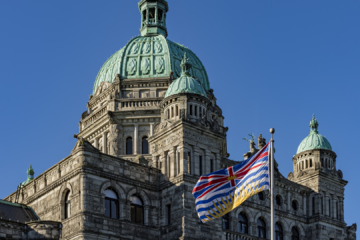Legal Pluralism and the SCC’s decision in Reference re An Act respecting First Nations, Inuit and Métis children, youth and families
February 26, 2024
BY Megan Vis-Dunbar
The BCLI’s Reconciliation Primers highlight how legal pluralism underpins meaningful implementation of the UN Declaration on the Rights of Indigenous Peoples (UNDRIP). It can support the application and prioritization of separate and shared legal authorities. As noted in Legal Pluralism: Indigenous Legal Orders & Canadian State Law, the Act respecting First Nations, Inuit and Métis children, youth and families (the Act) presents a helpful example for how legislation can create a framework for coordinating the application of different Indigenous legal orders and state laws.
In assessing the constitutionality of the Act, the Supreme Court of Canada applied a legal pluralist analysis.[1] The Court’s analysis draws out some of the layers of legal pluralism within the Act. It is helpful to understanding the relationships between different legal norms within the legislation and Parliament’s vision for building and maintaining respectful relationships between distinct legal orders.
The Court articulated some of the ways in which the legislation brings together three different legal norms: Indigenous laws, Canadian Crown laws, and international legal standards. These norms are reflected in the process leading up to development of the Act, the text of the Act, its purpose, and the space it creates for developing legislation and government-to-government arrangements moving forward.
As the Court noted, these distinct legal norms are not stand alone elements within the legislation. They are interwoven and mutually reinforcing. For example, the purpose of the Act has three interwoven elements which support the overarching purpose of protecting the well-being of Indigenous children, youth and families. The interwoven elements of the purpose are an affirmation of inherent Indigenous jurisdiction in relation to child and family services, legislative provisions enacted by Parliament to establish national standards, and international standards as articulated in UNDRIP. The Court helpfully provides examples of how these distinct elements are mutually reinforcing:
Affirming the legislative authority of Indigenous groups, communities and peoples and adopting national standards were viewed as an integral part of implementing aspects of the UNDRIP. Similarly, the affirmation of Indigenous legislative authority was also seen to sit comfortably alongside the national standards articulated by Parliament, because Indigenous communities had been participants in formulating the standards and were expected to be participants in implementing them thereafter.[2]
As the BCLI has noted in the Reconciliation Primers, there are various ways state law can facilitate respectful relationships between distinct legal norms in a manner consistent with UNDRIP. Further, the effect of creating space for the exercise of jurisdiction by Indigenous Peoples and communities, is to invite further weaving together of Indigenous, national and international law to protect the well-being of Indigenous children, youth and families.[3]
In affirming Parliament’s openness to a legally plural framework for reconciliation, the Act and the Court’s decision help shed some insight on a path forward in the area of child and family well-being. The shift this legislation represents towards respect for Indigenous legal orders on par with federal state law is a welcome shift in the Canadian legal framework.
[1] See Reference re An Act respecting First Nations, Inuit and Métis children, youth and families, 2024 SCC 5.
[2] Supra note 1 at para. 53.
[3] Supra note 1 at para. 134.












































